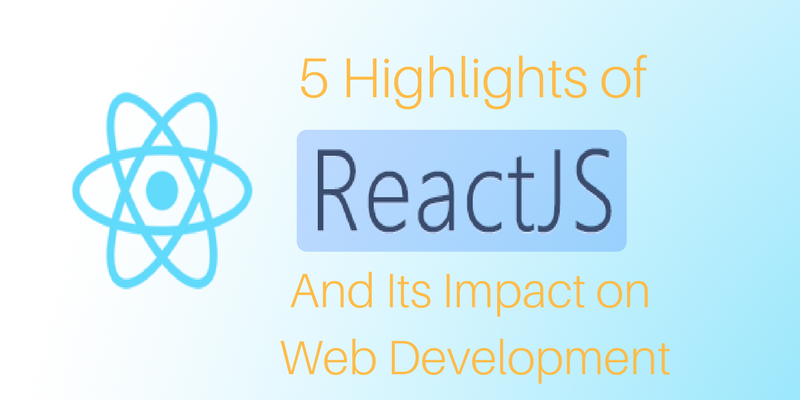Think for yourself- what is the first thing you notice when you land on a web page?
Depending on the type of user you are, the answer can either be -: 1. How fast the web page loads; or 2. How neat and responsive the user interface of the web page is.
ReactJS helps achieve both.
It is basically a JavaScript library developed and maintained by tech titan Facebook, which the ReactJS development services can deploy to enrich their web applications with various features it has to offer.
Especially in the realm of custom web development where the application needs unique features to suit the specific business needs and to be able to stand apart, ReactJS is quickly drawing the attention of most web development companies. Though Facebook has been using the technology since 2011, it earned its open-source tag only recently in 2015 and has been gaining popularity ever since due to the following reasons:
1.Components
One of the key aspects of React.js is its components, which are generally written in JSX. These components are responsible for updating the display without actually reloading the entire page. Simply put, a reader() method internally maintains the state of current data, which when changes, a corresponding change in display is automatically generated without requiring any action from the user.
Additionally, these components are built to easily integrate with other libraries to facilitate additional features.
2.Architecture beyond HTML
Generally, web applications are displayed by rendering their corresponding HTML code by the browser. This not only limits their functionality to HTML but also consumes more time to load the page. ReactJS enables the web application to render extra components than just basic HTML layout and is also capable of creating isomorphic applications by rendering the same piece of code for both client and server, which reduces the loading time to a minimum value.
3.DOM element
Another unique feature of ReactJS is the use of virtual Document Object Model that renders a relatively lighter and faster application. It enables developers to neatly define the name and attributes of each element of the page and the respective changes. The DOM, however, renders only those elements of the page that have been changed, leaving out the rest to save the time that matters.
4.One-way data flow
One-way data flow or one-way data binding is the procedure through which ReactJS controls the flow, or more appropriately, the validation of data without proper checks and balances. Typically, the value of a property is displayed in the view, which when changed, also reflects in the model. Such is not the case with ReactJS, which allows data to flow only from model to view and not the other way around.
5.React fiber
Adding another layer of features and convenience to ReactJS, Facebook in April 2017 announced an updated framework called ‘React Fiber’ with the aim to fuel the next generation of custom web development. This brings with it features like scheduling and incremental rendering that enables web pages to render codes only when required or when any fixed criteria are met.
So, for businesses seeking web development services, if you want to build a large application that will constantly consume and update data, ReactJS is possibly the best option you have. With this, you can bring the required level of dynamism and scalability to the project.
